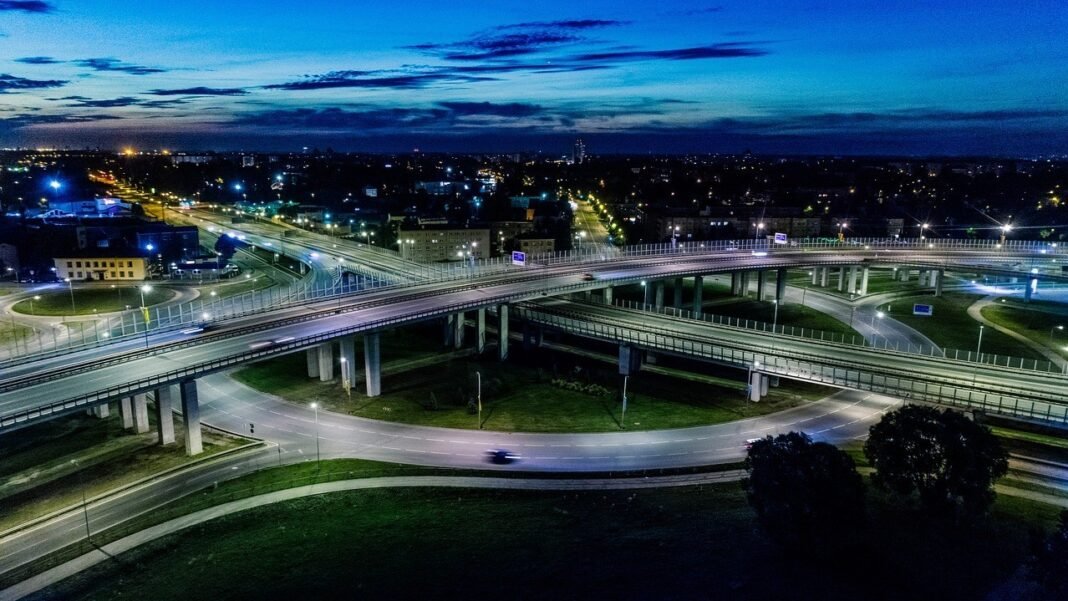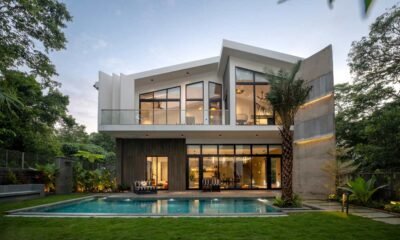News
Lowrise vs Highrise: What’s Shaping Buyer Preferences Along Dwarka Expressway

Gurugram, May 22, 2025: As the Dwarka Expressway (DXP) rapidly transforms into one of the most promising real estate corridors in the NCR, homebuyers face a growing dilemma—should they go for the community feel and exclusivity of low-rise developments or opt for the sky-high views and amenities offered by high-rises?
This debate is playing out strongly across sectors like 102 and 104, where both formats are competing for attention, each catering to a different buyer mindset.
Pandemic Triggers Low-Rise Dominance
In 2021, low-rise independent floors comprised over 70 per cent of Gurugram’s new residential launches, as per a JLL report. This surge was amplified by the Haryana government’s Deen Dayal Jan Awas Yojana, which promoted low-density housing through subsidies and faster approvals.
Buyers, reeling from lockdowns, prioritised open spaces, private terraces and quicker possession cycles—advantages inherent to low-rise projects, which typically take two to three years to complete versus five-plus years for high-rises.

Surender Kaushik, Founder and MD, ARIPL said, “In Sector 102, we have witnessed a significant surge in demand for its low-rise developments. Today’s homebuyers are increasingly drawn to residences that offer greater autonomy and a more personal connection to their surroundings.”
He added, “A standout feature that sets ARIPL’s development apart is its direct entry and exit point from DXP, the only low-rise community in the vicinity to offer such seamless connectivity, making it a rare and highly desirable offering. Such floors provide this balance from private terraces to dedicated stilt parking, allowing residents to enjoy a sense of independence that’s often missing in high-rise towers. There’s also a deeper neighbourhood connect that low-rise living naturally fosters.”
A 2023 Knight Frank India report notes that 40 per cent of buyers still prefer low-rise homes. Meanwhile, CBRE’s survey highlights that 65 per cent favour low-density developments post-pandemic, underscoring lasting demand for spacious, community-centric living.
High-Rises Fight Back
Despite the low-rise momentum, high-rises retain a stronghold, particularly among younger buyers and investors. Developers like HCBS in Sector 102 emphasise high-rises’ economies of scale: sprawling clubhouses, swimming pools and security systems that low-rise projects often lack.
Saurab Saharan, group MD, HCBS Developments, said, “High-rises deliver an unmatched value proposition. For INR 1.5–INR 2.5 crore, buyers access amenities like Olympic-sized pools, concierge services, co-working spaces and 360-degree views—features physically impossible in low-rise setups.
Scale also ensures better security: biometric access, 24/7 surveillance and fire safety systems that smaller projects can’t replicate. Investors recognise this—rental yields in towers are 15–20 per cent higher due to demand from corporate tenants. For young families and professionals, vertical living isn’t just practical; it’s aspirational.”
Price sensitivity further tilts the scale. High-rises in gated communities along the expressway offer smaller units (1–2 BHK) at competitive rates, appealing to nuclear families and professionals employed in nearby corporate hubs.
Maintenance Equation
Low-rise projects hold an edge in operational costs. Maintenance charges for such developments are typically 30–40 per cent lower than high-rises, as they require fewer elevators, security personnel, and shared infrastructure.

“The demand for boutique low-rise projects isn’t just about square footage—it’s a lifestyle statement,” explains Vishesh Rawat, V-P and Head of Marketing, Sales and CRM, M2K Group.
“Buyers want villa-like privacy without sacrificing urban infrastructure. Our projects offer private terraces, direct street access, and minimal shared walls, which appeal to end-users tired of congested towers. Yet, they’re still part of a managed gated township with security and luxury amenities of the club. Young families as well as elderly members find this blend very convenient and sustainable in the long term.”
However, the withdrawal of the Deen Dayal Awas Yojana has slowed new low-rise launches. Developers now face higher land costs and regulatory hurdles, pushing them toward high-rise projects to maintain margins. The policy vacuum has forced a supply crunch in low-rise, but demand hasn’t faded—it’s just unmet,”—a feeling shared by real estate experts.
Hybrid Models and the Future
To bridge the gap, builders are experimenting with hybrid townships. Projects like ARIPL’s in Sector 102 combine low-rise floors with mid-rise towers, offering varied price points.

“The pandemic rewrote the rules of real estate. Earlier, high-rises symbolised status. Now, buyers equate luxury with functionality,” says Viineet Chellani, Founder and CEO, Asset Deals.
“Families prefer round-floor access for elderly parents, private terraces for work-from-home zones and faster possession timelines. Yet, high-rises aren’t fading—they’re evolving. Projects now integrate health clubs, daycare centres and smart home tech to counter low-rise appeal. The market isn’t choosing one over the other; it’s demanding both. Hybrid models cater to multigenerational needs under one roof.”
As the expressway’s infrastructure nears completion, its real estate market reflects a broader urban shift: the rise of hyper-personalised housing.
Whether low-rise or high-rise wins, the corridor’s success hinges on aligning supply with a fragmented yet aspirational buyer base. For some, luxury means stepping into a private garden; for others, it’s a penthouse view of Gurugram’s skyline. DXP, it seems, has room for both visions.

 News4 weeks ago
News4 weeks agoInfrastructure Automation Company Enlite Launches World’s First Patented Edge Controller for Intelligent Infrastructure

 News3 weeks ago
News3 weeks agoTWH Hospitality Announces Aggressive F&B Expansion Plan with ₹30 Cr Investment

 News2 weeks ago
News2 weeks agoCanonicus Capital Closes ₹200 Crore Private Equity Fund Focused on NCR Real Estate

 News2 weeks ago
News2 weeks agoThe Big-Size, Branded Luxury Ticket: Is a New Chapter Unfolding in Indian Real Estate?

 News4 weeks ago
News4 weeks agoGodrej Properties Crosses FY26 Annual Business Development Guidance with Acquisition of 75-acre land parcel in Nagpur

 News4 weeks ago
News4 weeks agoReal Estate Investment Momentum in APAC, India to Hold Steady Through 2026: Colliers’ Survey Insights

 Guest Column3 weeks ago
Guest Column3 weeks agoGhats With a View: Tilari Can Redefine Farmstay Market in India

 News2 weeks ago
News2 weeks agoLoans to Get Cheaper as RBI Cuts Repo Rate to 5.25% Amid Low Inflation, Robust GDP Growth





























